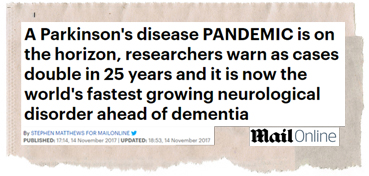
Leading clinicians outline 4 strategic steps to tackling Parkinson’s worldwide
The takeaway
Why is it important?
%
IMPACT
- Novelty 60%
- Proximity 90%
- Deliverability 90%
Impact Opinion
Background
The details
1.Preventing onset: To combat HIV, the community changed behaviour. Similarly, although the exact cause of PD is unknown, behaviours such as exercise and possibly diet modification as well as reducing exposure to pesticides can be actively promoted.
2.Increasing access to specialist care: in the US and Europe, more than 40% of people with Parkinson’s do not see a neurologist for their condition. In less wealthy nations, many are never diagnosed, often due to lack of specialists. This was an even starker problem for those affected by HIV.
3.Increasing research funding: In the US, Parkinson’s research receives less national funding per patient than many other areas, and campaigning should address this. Research funding into HIV began by the community itself, until intense advocacy ramped up government and industry research which identified the cause and treatments for the condition.
4. Increasing affordable treatments for all: 40% of all countries, and 80% of developing countries do not have access to PD medications, including levodopa. Activism in the HIV community was important in increasing access to lifesaving medications.
Related work
Pringsheim, T., Jette, N., Frolkis, A., Steeves, T.D.L. (2014). The prevalence of Parkinson’s disease: a systematic review and meta-analysis. Mov Disord, 29(13): 1583-1590.
Link to NIH research funding by condition and disease categories https://report.nih.gov/categorical_spending.aspx



